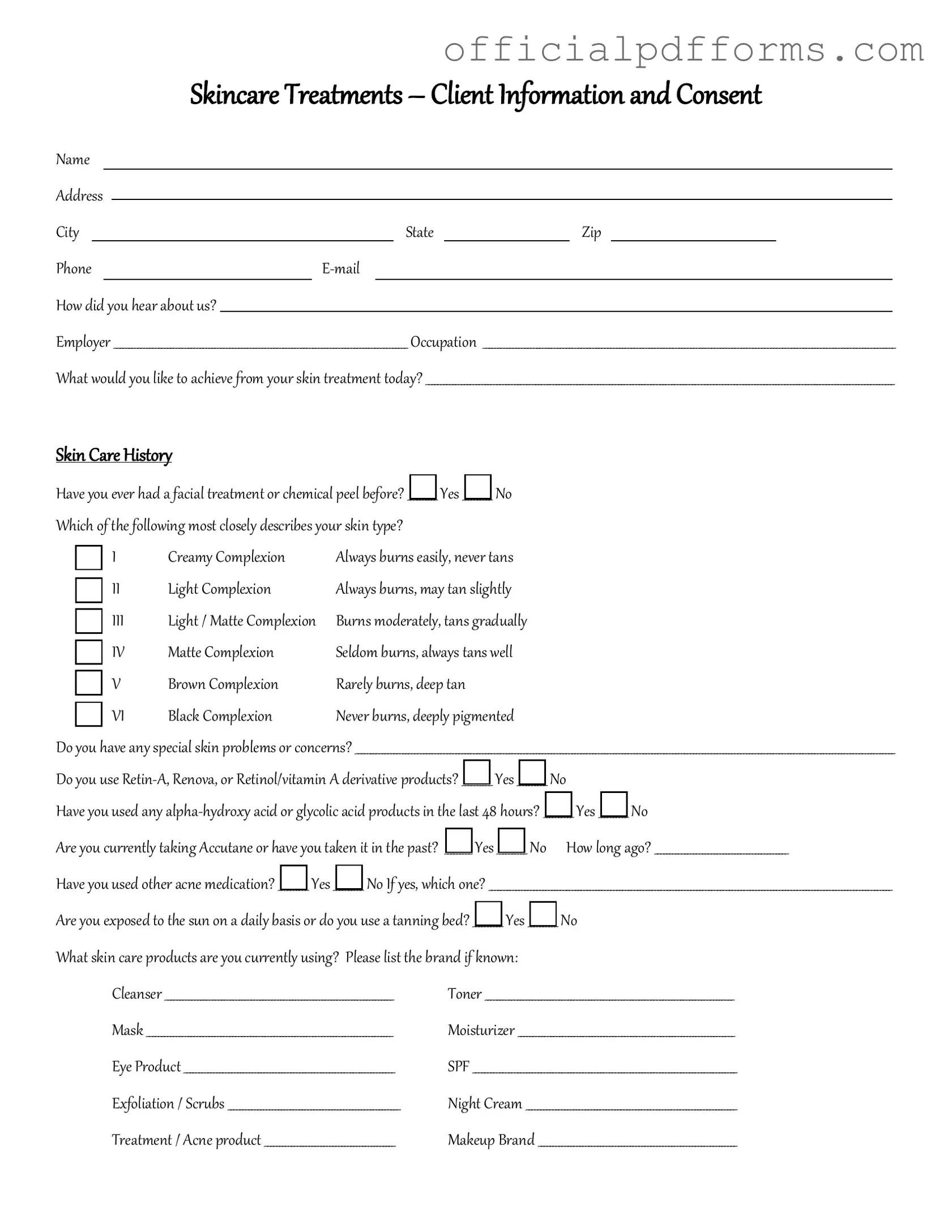Fill in a Valid Facial Consent Form
A Facial Consent form is a document that ensures clients understand and agree to the procedures and potential risks involved in facial treatments. This form protects both the client and the service provider by establishing clear communication and consent. To ensure a smooth experience, make sure to fill out the form by clicking the button below.
Access Form Online
